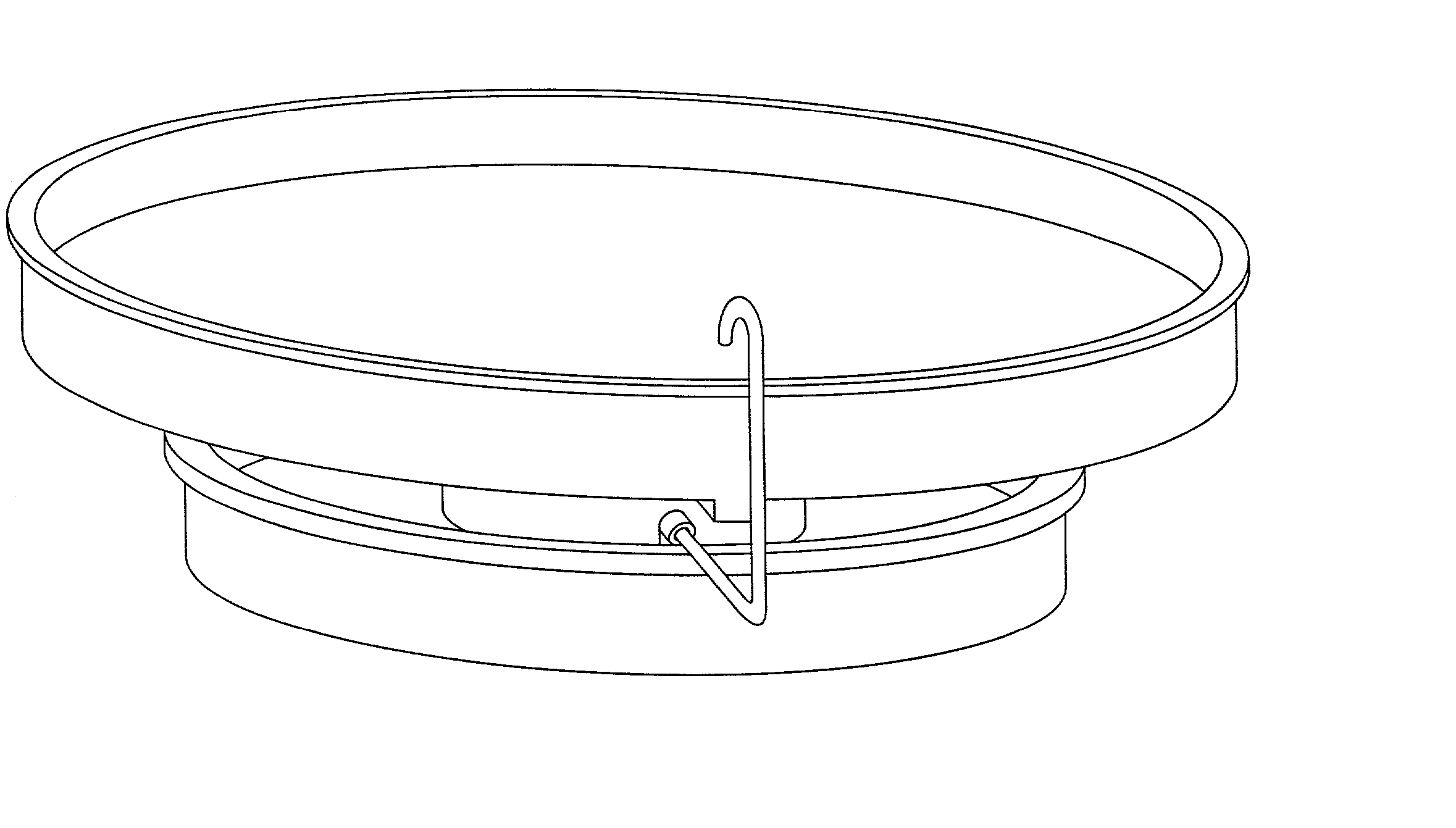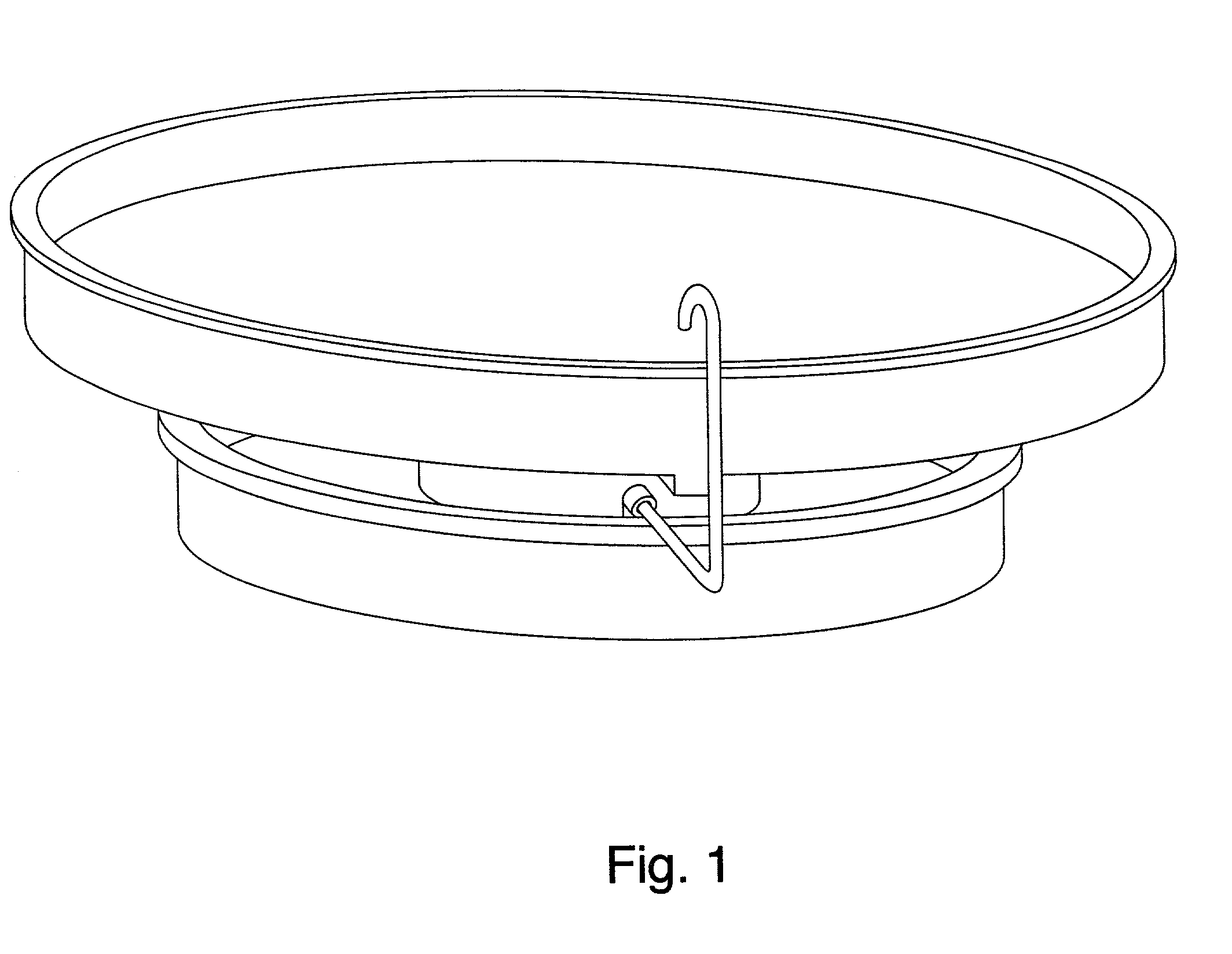Hydroponic apparatus and method
a technology of hydroponic equipment and water storage tank, applied in botany apparatus and processes, agriculture, gas emission reduction, etc., can solve the problems of increasing the mass of the system, requiring expensive pumps and plumbing, and large amounts of material and space in the growing bed
- Summary
- Abstract
- Description
- Claims
- Application Information
AI Technical Summary
Problems solved by technology
Method used
Image
Examples
Embodiment Construction
--Preferred Embodiment
[0071] A rotating receptacle for retaining plants rooted in removable containers constitutes the primary feature of my hydroponic apparatus. FIG. 1 shows a preferred embodiment for the present invention. FIG. 2 and FIG. 2B show a frontal view and a corresponding exploded view.
[0072] The receptacle shown in FIG. 3 (perspective), FIG. 4 (top view), and FIG. 5 sectional view) will be of circumferential configuration comprising a planar rigid bottom 20 and an upstanding containment wall 21. Containment wall 21 encircles perimeter of and contiguously conjoins bottom 20. Bottom 20 has a diameter determined from a percentage of area the light source photosynthetically services. Containment wall 21 will not be taller than the height of any plant container placed in the receptacle. Containment wall 21 will be taller than the highest point of any drain opening of any plant container placed in the receptacle.
[0073] As seen in FIG. 4 and FIG. 5, the nutrient solution, once...
PUM
 Login to View More
Login to View More Abstract
Description
Claims
Application Information
 Login to View More
Login to View More - R&D
- Intellectual Property
- Life Sciences
- Materials
- Tech Scout
- Unparalleled Data Quality
- Higher Quality Content
- 60% Fewer Hallucinations
Browse by: Latest US Patents, China's latest patents, Technical Efficacy Thesaurus, Application Domain, Technology Topic, Popular Technical Reports.
© 2025 PatSnap. All rights reserved.Legal|Privacy policy|Modern Slavery Act Transparency Statement|Sitemap|About US| Contact US: help@patsnap.com



